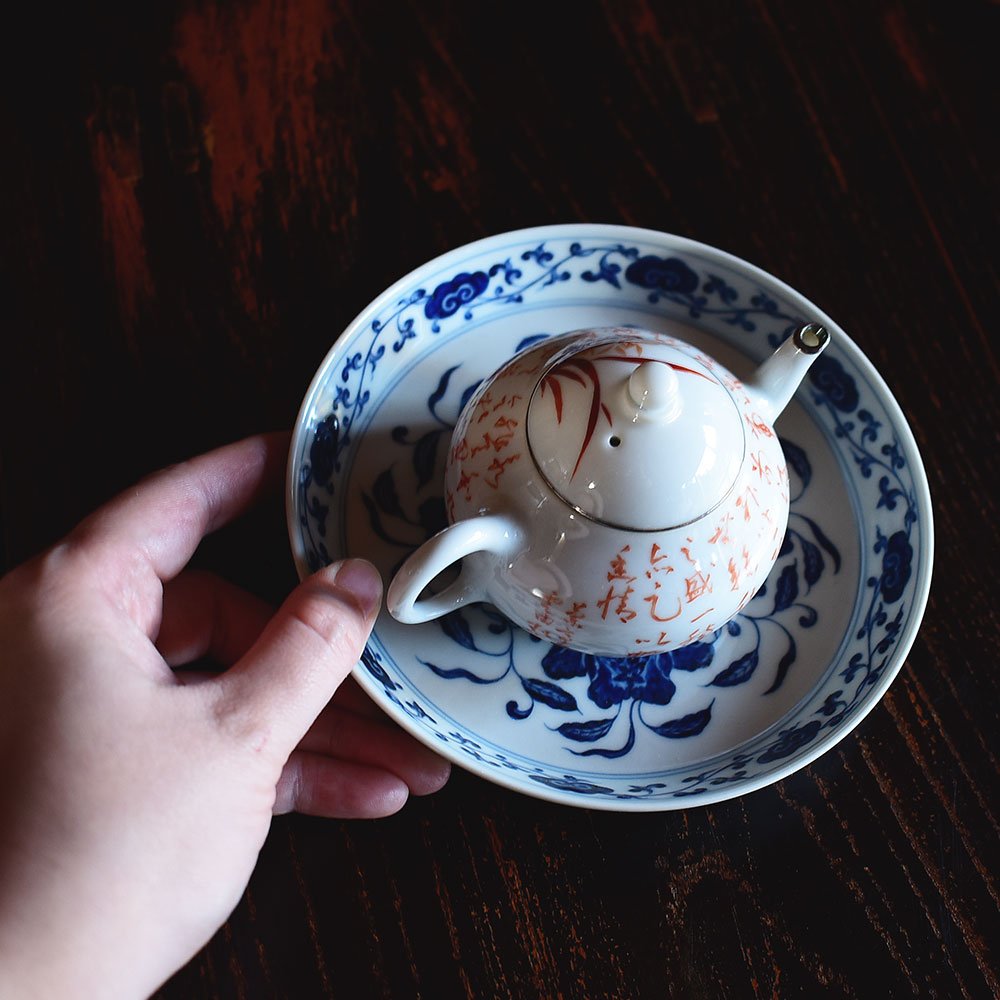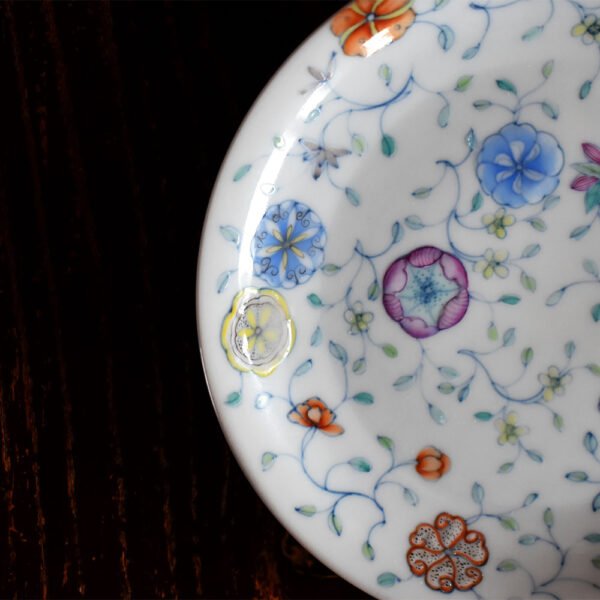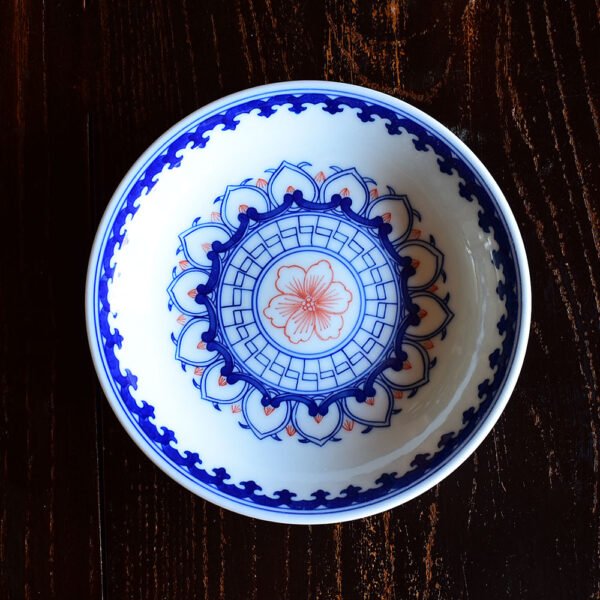This tea tray is crafted with antique-style clay and meticulously made using underglaze blue techniques. Its delicate brushwork, subtle tin speckles, and warm, solid texture unique to antique-style clay imbue this tea tray with an aura of classical elegance and exquisite beauty.
The decorative pattern on this tea tray features camellia flowers, adorned with Ruyi motifs on the sides. In ancient China, camellia flowers held rich symbolism and meaning. Firstly, camellia flowers symbolize resilience. As one of the few flowers that bloom in winter, camellias demonstrate remarkable endurance and can bloom independently even in the harsh cold. Therefore, camellias represent tenacity and the need for unwavering perseverance to achieve success. Secondly, camellias also symbolize love. With their vibrant colours and blossoms resembling smiling lips, camellias are not only beautiful but also convey passion. They are often used to express love, symbolizing the warmth and beauty of romantic affection. Lastly, camellias signify purity. Their simple coloration, free from the complexity and flamboyance of other flowers, makes them a symbol of purity and freshness, representing a pure and innocent heart.
The Ruyi motifs on the sides of this tea tray also carry auspicious meanings. The Ruyi symbolizes auspiciousness and good fortune. Its rounded and flawless form embodies blessings, satisfaction, and wishes fulfilled. Underneath its graceful appearance, it holds profound significance, representing the auspicious and delightful ideals of good fortune and contentment.
Expect those two traditional patterns, the beautiful tin speckles on the porcelain further enhance its unique charm. The formation of tin spots on Yuan blue and white is due to the high content of iron elements in local parts of the blue pigment. After reaching saturation in the high-temperature glaze solution and cooling down, the iron elements in the supersaturated part start to precipitate. If the iron content of the blue pigment is higher and the cooling rate is appropriate, tin spots are more likely to appear on the surface of the ware.
In addition to firing and materials, the formation of tin spots also involves the factor of glaze material. During the painting process, tin spots can also be formed due to the accumulation of blue pigment. Tin spots are more likely to appear on the surface of the ware at the intersections and the starting and ending points of brushstrokes. The formation of tin spots can be said to be a natural creation or an artificial decoration.
The body of this tea tray has a smooth and lustrous texture, with underglaze blue patterns that appear vivid and lifelike. The subtle tin speckles add a touch of nostalgia and natural beauty, exuding an old-world charm. Every brushstroke of the underglaze blue design is enchanting and vibrant. This beautiful blue-and-white tea tray not only embellishes your tea setting but also embodies the continuation of ancient culture and the expression of aesthetics. It allows you to immerse yourself in a graceful artistic atmosphere while enjoying your tea.






















There are no reviews yet.